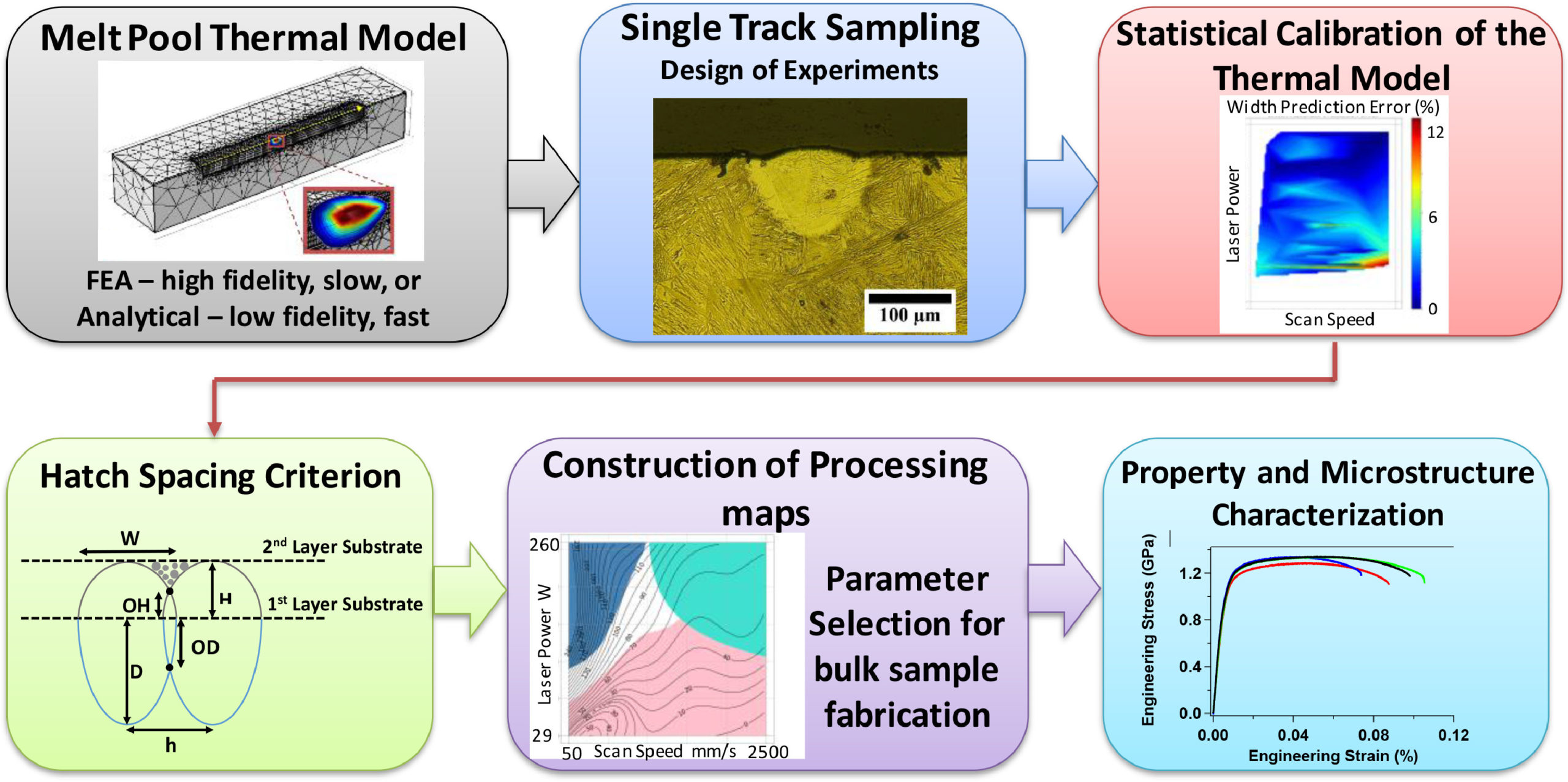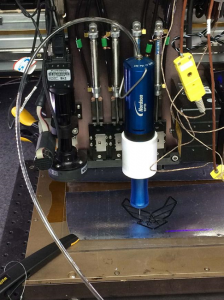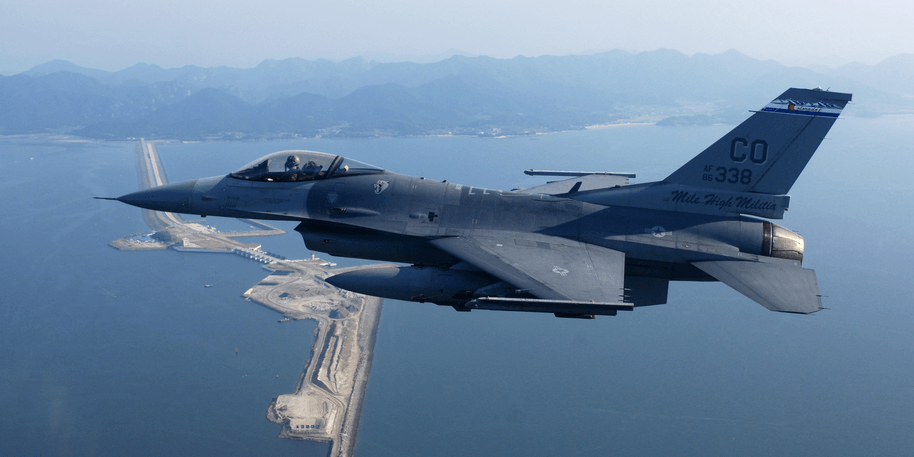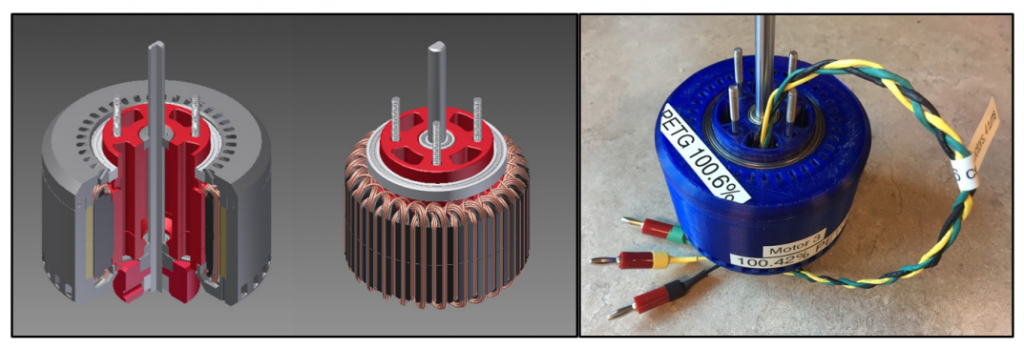US Air Force uses Senvol software to develop multi-laser 3D printing applications
3D printing industry news sliced: Satair, VELO3D, 3D Systems, Dimension Inx, REGEMAT, Open Additive, DP Technology and more
Texas A&M: A Method for 3D Printing Porosity Free Martensitic Steels
While seeking a corrosion-resistant alloy for gun barrels in 1912, British researcher Harry Brearley, who is commonly regarded as the inventor of stainless steel, discovered a martensitic stainless steel alloy. Although several variants of steel exist today, this type particularly stands out from its steel cousins as stronger and more cost-effective to produce. The renowned metallurgist probably never thought that his breakthrough discovery would go beyond developing affordable cutlery to the masses, well into applications in the aerospace, medical, automotive, and defense industries. Now over 100 years later, it can also be used as a metal 3D printing material for complex designs.
However, for these and other applications, the metals have to be built into complex structures with minimal loss of strength and durability, which is why researchers from Texas A&M University, in collaboration with scientists in the Air Force Research Laboratory, have developed guidelines that allow 3D printing of martensitic steels into very sturdy, defect-free objects of nearly any shape.
Reported in the scientific journal Acta Materialia, the findings of their study suggest that the process optimization framework introduced is expected to allow the successful printing of new materials in an accelerated fashion and introduces the process parameters for building porosity-free parts.
Although the procedure developed was initially for martensitic steels, the researchers said they have made their guidelines general enough so that the same 3D printing pipeline can be used to build intricate objects from other metals and alloys as well.
“Strong and tough steels have tremendous applications but the strongest ones are usually expensive — the one exception being martensitic steels that are relatively inexpensive, costing less than a dollar per pound,” said Ibrahim Karaman, Chevron Professor and head of the Department of Materials Science and Engineering at Texas A&M. “We have developed a framework so that 3D printing of these hard steels is possible into any desired geometry and the final object will be virtually defect-free.”

A flowchart summarizing the framework, introduced in this study (Credit: An ultra-high strength martensitic steel fabricated using selective laser melting additive manufacturing: Densification, microstructure, and mechanical properties)
The high-strength, lightweight, and cost-effective martensite steels are formed when steels are heated to extremely high temperatures and then rapidly cooled. The sudden cooling unnaturally confines carbon atoms within iron crystals, giving martensitic steel its signature strength.
Texas A&M claimed that to have diverse applications, martensitic steels, particularly a recently discovered type of low-alloy, ultra-high-strength martensitic steel known as AF9628, need to be assembled into objects of different shapes and sizes depending on the particular application they will be used for, and that’s when additive manufacturing (AM) offers a practical solution.
Stainless steels can be used to 3D print complex designs that are normally impossible to fulfill. 3D printing methods initially used by the team to build complex items were direct metal laser sintering (DMLS) aka selective laser melting (SLM) and also known as Powder Bed Fusion. However, Texas A&M researchers detected that 3D printing martensitic steels using lasers can introduce unintended defects in the form of pores within the material. Moreover, they detected that there is currently no known work describing process-structure-property relationships for AF9628 in the context of AM, something they considered should be systematically studied, focusing on the effects of AM process parameters on the microstructural evolution and resulting mechanical properties of this new martensitic steel.
“Porosities are tiny holes that can sharply reduce the strength of the final 3D printed object, even if the raw material used for 3D printing is very strong,” Karaman said. “To find practical applications for the new martensitic steel, we needed to go back to the drawing board and investigate which laser settings could prevent these defects.”
In an effort to produce high strength parts with a high degree of control over geometry, the researchers presented the effects of the SLM parameters on the microstructure and mechanical properties of the new steel AF9628.
For their experiments, Karaman and his team first chose an existing mathematical model, called Eagar-Tsai, inspired from welding to predict the melt pool geometry, that is, how a single layer of martensitic steel powder would melt for different settings for laser speed and power. By comparing the type and number of defects they observed in a single track of melted powder with the model’s predictions, they were able to change their existing framework slightly so that subsequent predictions improved.
They claim that after a few of these iterations, their framework could correctly forecast, without needing additional experiments, if a new, untested set of laser settings would lead to defects in the martensitic steel.
Raiyan Seede, a graduate student in the College of Engineering at Texas A&M and the primary author of the study, explained that “testing the entire range of laser setting possibilities to evaluate which ones may lead to defects is extremely time-consuming, and at times, even impractical. By combining experiments and modeling, we were able to develop a simple, quick, step-by-step procedure that can be used to determine which setting would work best for 3D printing of martensitic steels.”
Seede also noted that although their guidelines were developed to ensure that martensitic steels can be printed devoid of deformities, their framework can be used to print with any other metal. He said this expanded application is because their framework can be adapted to match the observations from single-track experiments for any given metal.
“Although we started with a focus on 3D printing of martensitic steels, we have since created a more universal printing pipeline,” Karaman indicated. “Also, our guidelines simplify the art of 3D printing metals so that the final product is without porosities, which is an important development for all type of metal additive manufacturing industries that make parts as simple as screws to more complex ones like landing gears, gearboxes or turbines.”

Backscattered electron images of the etched cross-sections of AF9628 ultra-high strength martensitic steel as-printed cubes. The yellow dotted lines indicate melt pool boundaries (Credit: An ultra-high strength martensitic steel fabricated using selective laser melting additive manufacturing: Densification, microstructure, and mechanical properties)
This research, funded by the Army Research Office and the Air Force Research Laboratory, reports a successful methodology to determine optimal processing parameters, like laser power, laser scan speed, and hatch spacing, in selective laser melting AM in order to fabricate porosity-free parts.
The team of researchers effectively used it to fabricate fully dense samples over a wide range of process parameters, allowing the construction of an SLM processing map for the new martensitic steel alloy AF9628. Given the potential of this new high-performance steel, useful for machine tool components, structural components for aircraft gear, automotive parts, and even for ballistic armor plates, creating a new framework offers the potential to 3D print this new material much quicker, providing a powerful tool to many industries.
The post Texas A&M: A Method for 3D Printing Porosity Free Martensitic Steels appeared first on 3DPrint.com | The Voice of 3D Printing / Additive Manufacturing.
America Makes inks seven-year $322M agreement with U.S. Air Force to advance additive manufacturing
Air Force Institute of Technology develops high-strength steel for 3D printed munitions
ARFL, Boeing, Thermwood apply Large Scale Additive Manufacturing to autoclave tools
AFRL and University Partners Used 3D Printed Composite Materials to Make Structural Parts
 The Air Force Research Laboratory (AFRL), located at Wright-Patterson Air Force Base (WPAFB) near my hometown of Dayton, Ohio, has long been interested in using 3D printing and composite materials for the purposes of aerospace applications. Last year, AFRL’s Composites Branch at the Materials and Manufacturing Directorate partnered up with researchers from the University of Arkansas, the University of Miami in Florida, Louisiana Tech University, and the University of Texas at El Paso (UTEP) to work on advancing 3D printable composite materials.
The Air Force Research Laboratory (AFRL), located at Wright-Patterson Air Force Base (WPAFB) near my hometown of Dayton, Ohio, has long been interested in using 3D printing and composite materials for the purposes of aerospace applications. Last year, AFRL’s Composites Branch at the Materials and Manufacturing Directorate partnered up with researchers from the University of Arkansas, the University of Miami in Florida, Louisiana Tech University, and the University of Texas at El Paso (UTEP) to work on advancing 3D printable composite materials.
The Composites Branch works on the research and development of organic and ceramic matrix composite technologies for legacy, developmental, and future Air Force system components. Together with its university partners, the AFRL branch demonstrated 3D printed composite materials, made from a combination of carbon fiber and epoxy, which had been successfully fabricated and used to make structural parts on both air and space craft. The results of this 3D printed composite material effort will soon be published in a special issue of the Journal of Experimental Mechanics that’s dedicated to the mechanics of 3D printed materials.
Dr. Jeffery Baur, leader of the Composite Performance Research Team, said, “The potential to quickly print high-strength composite parts and fixtures for the warfighter could be a tremendous asset both in the field and for accelerating weapon system development.”
 Composite materials are made up of two, or sometimes more, constituent materials that have very different chemical or physical properties. When combined, these components produce a new material that has characteristics which are different from the originals. The individual components that make up the composite will remain distinctly separated within the final material structure.
Composite materials are made up of two, or sometimes more, constituent materials that have very different chemical or physical properties. When combined, these components produce a new material that has characteristics which are different from the originals. The individual components that make up the composite will remain distinctly separated within the final material structure.
When compared to the more low-quality polymers that are typically used in 3D printers, the composite materials demonstrated by AFRL and its partners are the same type that are already being used to make Air Force system components. These materials are very strong, while also lightweight, and have higher thermal and environmental durability than most.
Most traditional epoxy and carbon fiber composites are made by layering carbon fiber sheets, coated with epoxy resin, on top of each other. Then, the whole thing is cooked for hours in a costly pressure cooker to finish. The major downside to this method is that it’s more difficult to create parts that have complex shapes when sheets are being used.
This is where additive manufacturing comes in. Composite materials that are 3D printed are able to create parts with those complex shapes, and additionally don’t require the use of long heating cycles or expensive pressure cookers. On a materials level, there aren’t a whole lot of downsides to using composites for the purposes of producing, assembling, or repairing parts for the Air Force, whether at the depot or out in the field.
Military branches in other countries are also seeing the benefit of 3D printable composite materials. For example, engineers in India are manufacturing complex core structures using the composite 3D printing process; when combined with top and bottom face sheets, these structures will create lightweight sandwich structures that have properties tailored specifically to, as AFRL put it, “the physical forces that need to be carried.”
Conventionally fabricated sandwich structures use the same core geometries over the entire area of an aircraft skin, but a 3D printed version would be able to stand up under heavier forces when necessary, while also remaining lightweight in other parts of the skin.
Discuss this story and other 3D printing topics at 3DPrintBoard.com or share your thoughts in the Facebook comments below.
[Source: Dayton Daily News]
AFRL and U.S. universities create 3D printable epoxy/carbon fiber composites for aircraft parts
Air Force Research Laboratory Testing 3D Printed Parts for Motors
In ‘3D Printed Motor: In-House Seedling Effort: Experiential Training for Building and Experimentally Testing a Motor Using 3D Printed Elements,’ authors Kevin J. Yost and Maxwell Stelmack discuss what they learned in a two-month technical sprint with the Air Force Research Laboratory (AFRL), meant to teach 3D printing skills and present challenges that would allow them to go on to fabricate more complex items like motors—and more specifically the creating of, experimenting with, and testing of a Halbach array permanent magnet motor.
This military-funded project involved ‘high performing’ undergraduate students looking toward careers in science and engineering, assisted by mentors from the Wright Brothers Institute (WBI) under an AFRL partnership intermediary agreement (PIA)—offering strong support. Design and 3D printing methods were offered by makeSEA, allowing the authors great latitude in reaching their project goals, while only working part time. The project team also purchased CAD motor design files from makeSEA, but they required unexpected refinements including several ‘trials and tribulations and slight design changes’ that led to some substantial delays and complications eventually overcome.
Other challenges and lessons within the project over eight weeks included experiential training and pioneering in a new area, along with the following exercises:
- 3D printing motor parts
- Assembling machinery
- Handling magnetic characterization of iron (Fe) filled prints
- Designing and experimenting with a range of configurations and attributes
- Developing a test bed for new material and design evaluation
“Designing and fabricating electric machines utilizing traditional electric machine methods is not simple. This is especially true when there is not a current role in AFRL to be a component supplier nor a specific project need which AFRL fills,” state the authors. “3D printing enables a quick and low-cost tool for AFRL to affordably build and assemble a motor. The project pioneers a new area for AFRL, not because AFRL will build the machines, but more to create technical acumen and readiness for evaluating and influencing external partners and their concepts.”
Two magnets had to be created to complete assembly of the rotor, and project participants were left to figure out the proper distribution of magnet weight/mass and magnet field strength:
“For measuring the weight and mass of the permanent magnets, careful attention is needed to ensure the magnetic field does not interfere with the measurement system and that the magnet is in the same position for each measurement,” stated the authors.
They also had to configure a 3D printed jig around the hall effect sensor, wire and configure the armature conductor, windings, complex testing of filaments, and in the end, simulation and testing of components. Challenges did continue as they discovered iron fill print was not viable for required conductivity, ‘intuition’ failed in some areas, and the electromagnetic FEA setup needs to be more comprehensive.
“This project represented a mini seedling effort for ‘getting in the game’ of AM,” concluded the researchers. “Many lessons and hidden costs were learned at low cost prior to committing to larger projects. It is recommended to further this effort with a follow on seedling research effort to continue increasing readiness for electric machine innovation.”
“Areas recommended include (1) rapid prototyping, (2) AM of more relevant multifunctional materials employed, and (3) developing a test-bed for advanced materials in electric machines. The follow on effort should be sufficiently resourced to close the loop between design configurations and design of experiments, hardware testing results, and FEA.”
The Air Force is not the only division of the U.S. Armed Forces delving into 3D printing, and training soldiers in new techniques for fabrication of parts that can be used in remote areas for repair and maintenance and transfer of supplies. Many other divisions of the military are exploring further uses of this progressive technology, from underway replenishment for the Navy to Army soldiers 3D printing in the field, Marines producing replacement parts, and more. Find out more about how the U.S. Air Force is using 3D printing currently here. What do you think of this news? Let us know your thoughts; join the discussion of this and other 3D printing topics at 3DPrintBoard.com.
[Source / Images: 3D Printed Motor: In-House Seedling Effort: Experiential Training for Building and Experimentally Testing a Motor Using 3D Printed Elements]






